What is a lensometer?
It is a microscope used to measure the back focal length of a lens.
What are the different names for the lensometer?
Lensmeter and vertometer
What does a lensometer allow opticians to do?
1) It allows opticians to align a prescription lens for edge
grinding.
2) It allows verification or neutralization of a prescription
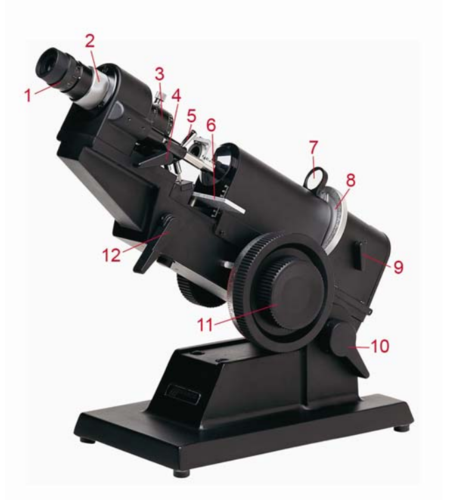
What are the parts of a lensometer?
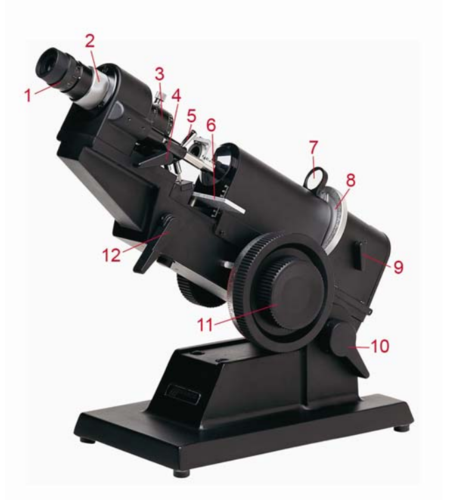
1) Eyepiece
2) Reticle Adjustment Knob
3) Prism
Compensator
4) Lens Marker
5) Gimbal (Lens Holder)
6)
Eyeglass Table
7) Magnifier
8) Axis Adjustment Knob
9)
Filter Control
10) Inclination Control
11) Power
Drum
12) Eyeglass Table Control
Parts of a lensometer:
What is the eyepiece of
a lensometer used for?
It allows the operator to adjust the reticle so that no matter what the refractive condition of the operator, the mires will always come into focus on the corrective power.
What do most states require opticians to do with an eyepiece for a lensometer?
Most states require that opticians show that they understand that the eyepiece must be adjusted to zero out the lensometer for their Rx.
How do you use an eyepiece to zero out the lensometer for their Rx?
By turning the eyepiece counterclockwise to the most plus setting and
they slowly turning they eyepiece clockwise towards the minus until
the reticle comes into focus.
It is important to go slowly
and repeat this process at least twice to make sure that no
accommodation is being stimulated leading to off power readings
through the lensometer.
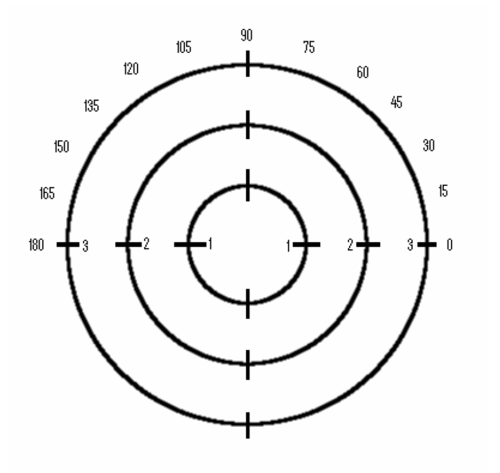
Parts of a lensometer:
What is the Reticle Adjustment Knob used for?
It is used to turn the reticle so that the scales lines up with the prism.
How is the measurement from the Reticle Adjustment Knob read?
It is read by where the mires falls on the concentric rings and at what angle they fall. The prism measurement is easily read here in compound form. The prism can be deconstructed with the use of equations into their resultant form
Parts of a lensometer:
What is the Prism Compensator and what is it used for?
It is a Risley prism or rotary prism that allows the operator to dial in 0 to 25 diopters of prism anywhere from 0 to 360 degrees.
Parts of a lensometer:
What is a Lens Marker and how does it work?
It is a device consisting of 3 spring leaded pins that dip into a water soluble in to mark the lens horizontally with the center pin marking the direct point being read through the lensometer.
Parts of a lensometer:
What is a Gimbal (Lens Holder) and what is it used for?
It is the arm that swivel into place to hold the lens or frame stable
while taking a reading.
The circular piece on the end
that swivels and has legs that touch the lens is referred to as a gimbal.
Parts of a lensometer:
What is the most common mark on a Lens Marker?
The Optical Center
180 degree meridian for edge grinding
Parts of a lensometer:
What is an Eyeglass table and what is it used for?
It is used to keep frame mounted and lens aligned properly for
measuring the correct axis of the lens.
The table often
bisects a scale mounted on the lensometer body used to measure height
of the optical center.
Parts of a lensometer:
What is a magnifier and what is it used for?
Some lensometers have this optional component which allows the operator an easier view of the view of the axis wheel by magnifying the scale.
Parts of a lensometer:
What is a Axis Adjustment Wheel and what is it used for?
It allows the operator to align the primary and secondary power meridians in the lensometer. This is done by spinning the mires inside the lensometer body.
Parts of a lensometer:
What is the Filter control and what is used for?
It is a small knob used to apply a green filter to the lensometer lamp for a more comfortable view through clear material while allowing this same filter to be removed for a brighter view of filtered lenses.
Parts of a lensometer:
What is the Inclination Control and what does it do?
It is used to loosen the lensometer body from the base, this allows the operator to adjust the viewing angle of the lensometer for easier viewing.
Parts of a lensometer:
What is the Power Drum and what does it do?
It is a wheel attached to a long screw on the inside of the lensometer body that moves the optics so that various powers can be neutralized.
What are the various powers of the Power Drum?
The wheel is in incremented steps of 0.12 diopters, with higher powers being incremented in steps of 0.25 diopters.
Parts of a lensometer:
What is an Eyeglass table control and what does it do?
It is used to move the eyeglass table to align the frame mounted optics.
What is the 1st step to using a Lensometer?
To calibrate and reset the lensometer to make sure it reads
properly.
This is done by setting the Power Drum to 0,
the Prism Compensator to 0 prism, and aligned along the 180 degree
line, the reticle to the 180 degree line, and then calibrating the
eyepiece.
You calibrate the eyepiece by turning the
eyepiece counterclockwise all the way and then slowly turning it
clockwise while viewing the reticle through the eyepiece. The
eyepiece should be turned clockwise until the reticle first comes
into sharp focus. (Repeat multiple times.)
What is the 2nd step to using a Lensometer?
Turn the lensometer on. If the lens is clear, the green filter should
be utilized and if the lens is a sun lens, the filter should be
removed.
Swivel the lensholder out of the way so to allow
a lens to be mounted. If the lens being measured or marked is a loose
lens (unmounted) then the eyeglass table should be lowered to its
lowest position to avoid interference with the lens.
The
lens should be placed on the lens stop (the opening on the lensometer
body where the lens rests). While viewing through the lensometer,
position the lens so it is centered in the reticle or intersects the
proper concentric prism, if being marked with prism. The lens holder
and gimbal should then be swiveled in place to stabilize the
lens.
Any adjustments to the lens position should be done
only after loosening the lens holder to eliminate friction between
the gimbal, the lens, and the lens stop preventing scratches while
neutralizing or marking.
Once Properly aligned, mark the
major reference point or point being viewed by depressing the pins of
the lens markers on the lens so all 3 pins come into contact with the
lens. This will mark the lens along the 180 line with the center mark
as the major reference point.
If lens is mounted the same
steps should followed except instead of moving the eyeglass table to
its lowest position, the lens table should be adjusted using the
eyeglass table control until the reference point is centered or
properly aligned within the reticle.
What is the 3rd step for using a lensometer?
Rough adjustments are often necessary.
The power drum
should be rotated from the most plus toward minus until the single
set of mires come into focus.
The mires may come into
focus with sections skewed. At this point, the axis wheel would be
rotated until the mires are no longer skewed. Once this is completed
the power drum can be fine adjusted to get the mires into
focus.
The 1st reading is the primary power reading which
should be documented along with the axis.
From here the
power drum should be rotated again towards the minus until the second
set of 3 mires comes into focus.
This 2nd reading is the
secondary power reading and lies perpendicular (90 degrees) from the
first set of mires. This power should be also documented.
These powers are in a form commonly referred to as drum
readings. from here the first power meridian is noted as the SPHERE,
the difference between the 1st and 2nd power meridian is the CYLINDER,
and the axis our 1st power is noted as the AXIS.
Another
tip to add would be the correct neutralization of add powers.
What are the two main groups of tools for glasses?
Drivers and Pliers
What are the types of drivers?
Screwdrivers
Hex/Star nut drivers
Screw Extractors
What are the types of pliers?
1) Bending pliers
2) Shaping pliers
3) Angling
Pliers
4) Gripping Pliers
5) Nose Pliers
6) Axis
Pliers
7) Cutting Pliers
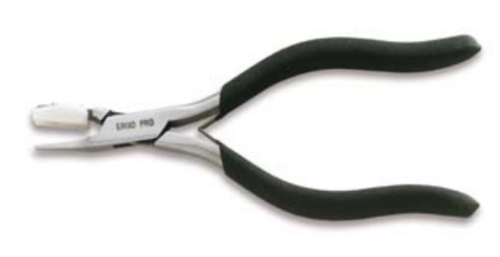
What is this and what is it used for?
Nylon Jaw Pliers
Commonly used on endpieces, bridges,
and brow bars
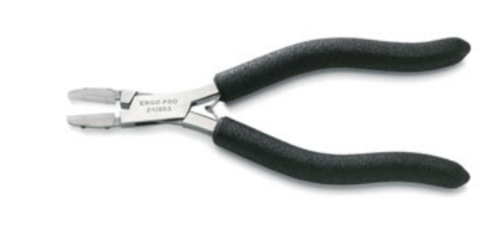
What is this and what is it used for?
Double Nylon Jaw Pliers
Multipurpose adjusting tool for
frames with delicate finishes. For bridge, endpiece and temple adjustment.
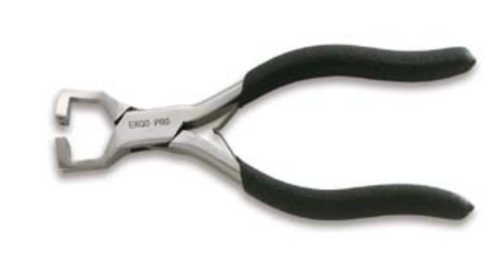
What is this and what is it used for?
Angling Pliers
Pantoscopic angle adjustments, heavy
bridge and endpeice corrections
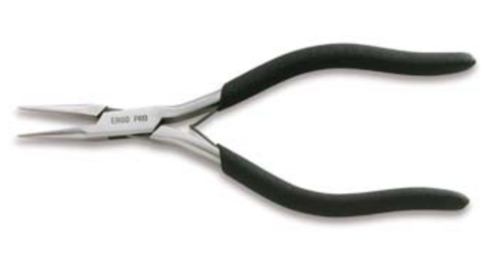
What is this and what is it used for?
Snipe Nose Pliers
Fine adjustments of curve areas of pad
arms, end pieces and eyewires.
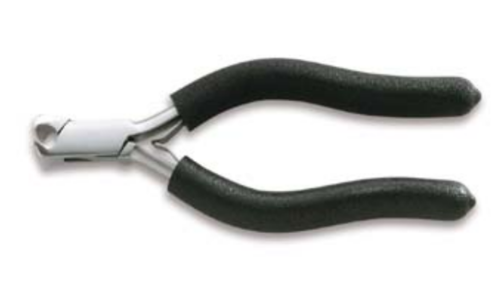
What is this and what is it used for?
Cutter Pliers
For cutting screws
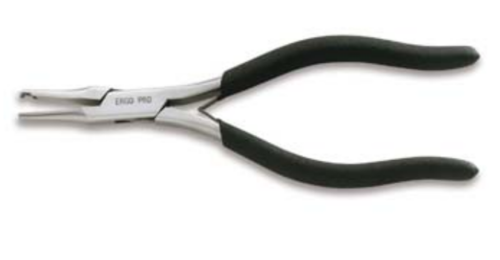
What is this and what is it used for?
Nose Pad Pliers
For screw-on, push-on, and clip-on type
nose pad assembly adjustments.
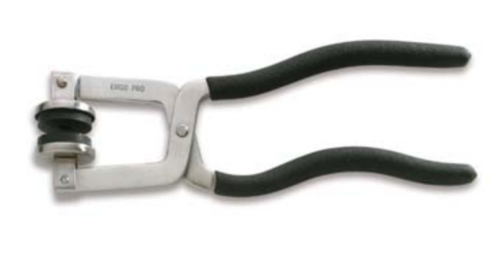
What is this and what is it used for?
Axis Pliers
For Lens axis aligning.
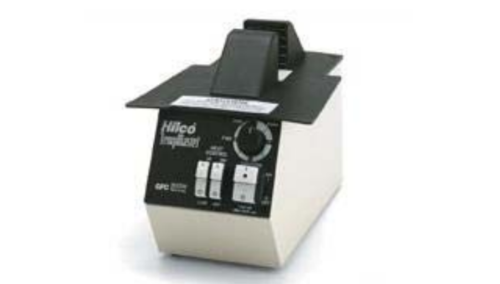
What is this and what is it used for?
Hot Air Frame Warmer
For warming plastic frames
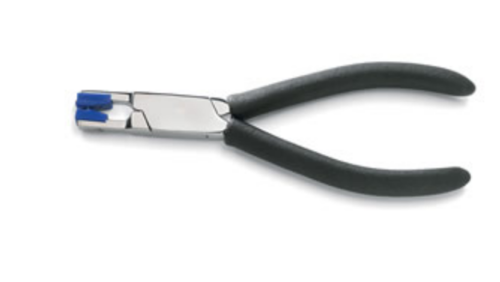
What is this and what is it used for?
Compression Pliers
For assembling compression mount frames
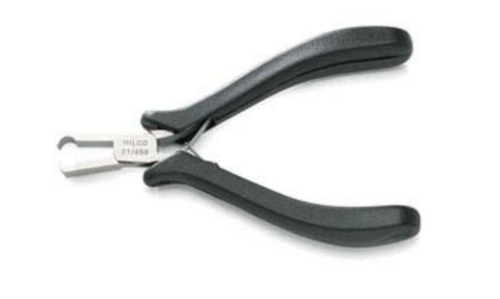
What is this and what is it used for?
Compression Sleeve Cutter
For trimming compression sleeves
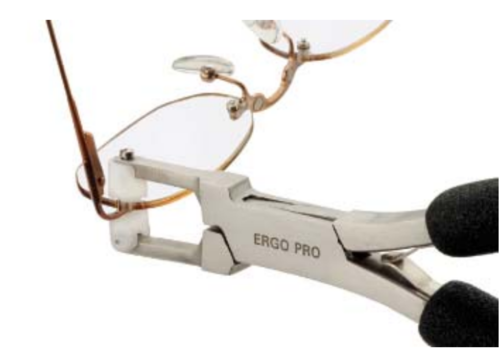
What is this and what is it used for?
3-Piece Frame Adjustment Pliers
For adjustment of drill
mount frames
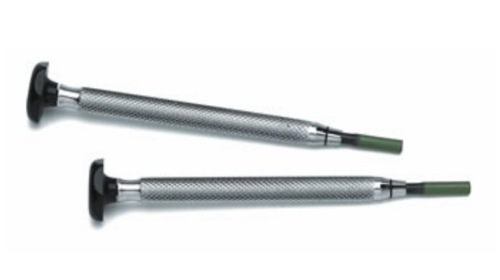
What are these?
Hex Wrenches
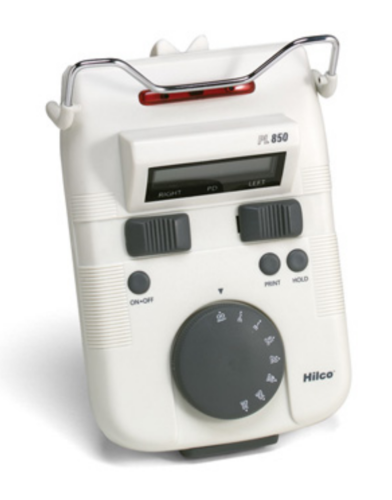
What is this and what is it used for?
Pupillmeter
Instrument used for measure pupillary
distance (PD)
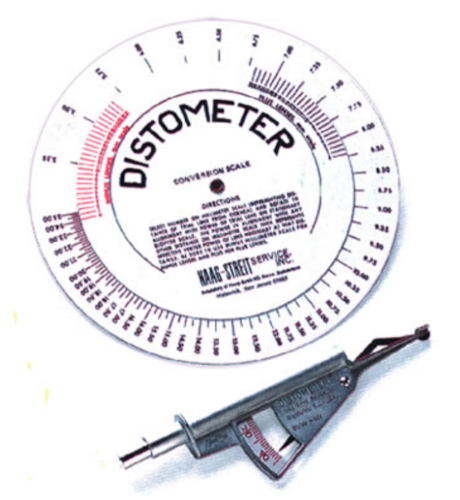
What is this and what is it used for?
Distometer
Instrument used for measuring vertex distance
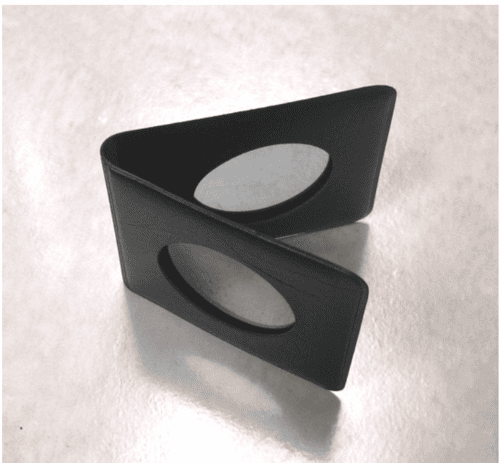
What is this and what is it used for?
Polariscope
Instrument used for visualizing and
measuring lens stress.